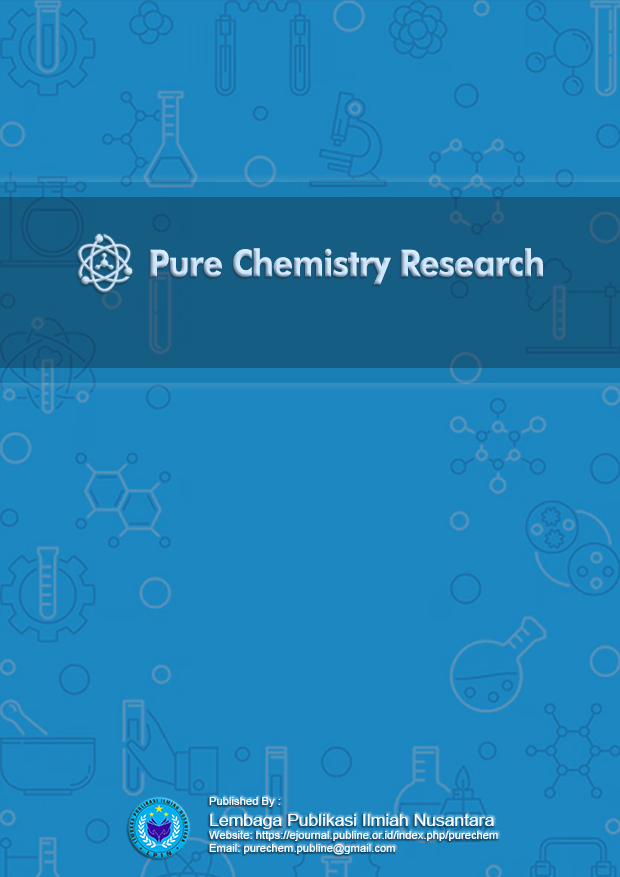Studi Termokimia Kuantum untuk Derivatif Flavonoid: Perbandingan Stabilitas Energi dan Aktivitas Antiradikal berdasarkan Metodologi DFT/B3LYP
DOI:
https://doi.org/10.70716/purechem.v1i1.266Keywords:
flavonoid, DFT, B3LYP, quantum thermochemistry, antioxidantAbstract
Flavonoids are a class of natural phenolic compounds with broad biological activities, particularly as antioxidants. Understanding the mechanism and efficiency of the antiradical activity of flavonoids can be achieved through the density functional theory (DFT) approach, which enables the analysis of bond energies and molecular reactivity parameters. This study employed the DFT/B3LYP method with the 6-31G(d,p) basis set to evaluate the energy stability and antiradical activity of several flavonoid derivatives. The analysis focused on ionization energy, electron affinity, HOMO–LUMO energy, and hydrogen atom donation potential. The computational results indicated that hydroxyl group substitution at specific positions influences antiradical capacity through resonance stabilization and reduction of O–H bond energy. Derivatives bearing hydroxyl groups at the ortho and para positions tend to be more stable and possess higher antiradical potential compared to other substitutions. These findings reinforce the role of DFT as a predictive tool for understanding the structure–antioxidant activity relationship in flavonoids, which is valuable for the development of bioactive compounds in pharmaceutical and food applications.
References
Becke, A. D. (1993). Density‐functional thermochemistry. III. The role of exact exchange. The Journal of Chemical Physics, 98(7), 5648–5652. https://doi.org/10.1063/1.464913
Foti, M. C. (2007). Antioxidant properties of phenols. Journal of Pharmacy and Pharmacology, 59(12), 1673–1685. https://doi.org/10.1211/jpp.59.12.0010
Galano, A., & Alvarez-Idaboy, J. R. (2013). A computational methodology for accurate predictions of rate constants in solution: Application to the assessment of primary antioxidant activity. Journal of Computational Chemistry, 34(28), 2430–2445. https://doi.org/10.1002/jcc.23387
Klein, E., Lukes, V., & Ilcin, M. (2007). DFT/B3LYP study of tocopherols and chromans antioxidant action energetics. Chemical Physics, 336(1), 51–57. https://doi.org/10.1016/j.chemphys.2007.04.006
Lee, C., Yang, W., & Parr, R. G. (1988). Development of the Colle-Salvetti correlation‐energy formula into a functional of the electron density. Physical Review B, 37(2), 785–789. https://doi.org/10.1103/PhysRevB.37.785
Parr, R. G., & Yang, W. (1995). Density-functional theory of atoms and molecules. Oxford University Press. https://doi.org/10.1093/oso/9780195092769.001.0001
Rice-Evans, C. A., Miller, N. J., & Paganga, G. (1996). Structure-antioxidant activity relationships of flavonoids and phenolic acids. Free Radical Biology and Medicine, 20(7), 933–956. https://doi.org/10.1016/0891-5849(95)02227-9
Trouillas, P., Fagnere, C., Lazzaroni, R., Calliste, C., Marfak, A., & Duroux, J. L. (2006). A theoretical study of the conformational behavior and electronic structure of quercetin. Food Chemistry, 97(4), 679–688. https://doi.org/10.1016/j.foodchem.2005.05.034
Valgimigli, L., & Pratt, D. A. (2012). Antioxidants in chemistry and biology. Chemical Communications, 48(40), 6233–6241. https://doi.org/10.1039/c2cc30155h
Wright, J. S., Johnson, E. R., & DiLabio, G. A. (2001). Predicting the activity of phenolic antioxidants: Theoretical method, analysis of substituent effects, and application to major families of antioxidants. Journal of the American Chemical Society, 123(6), 1173–1183. https://doi.org/10.1021/ja002455u
Downloads
Published
How to Cite
Issue
Section
License
Copyright (c) 2025 Ahmad Pratama, Lilis Kurniawati, Dwi Handayani

This work is licensed under a Creative Commons Attribution-ShareAlike 4.0 International License.










